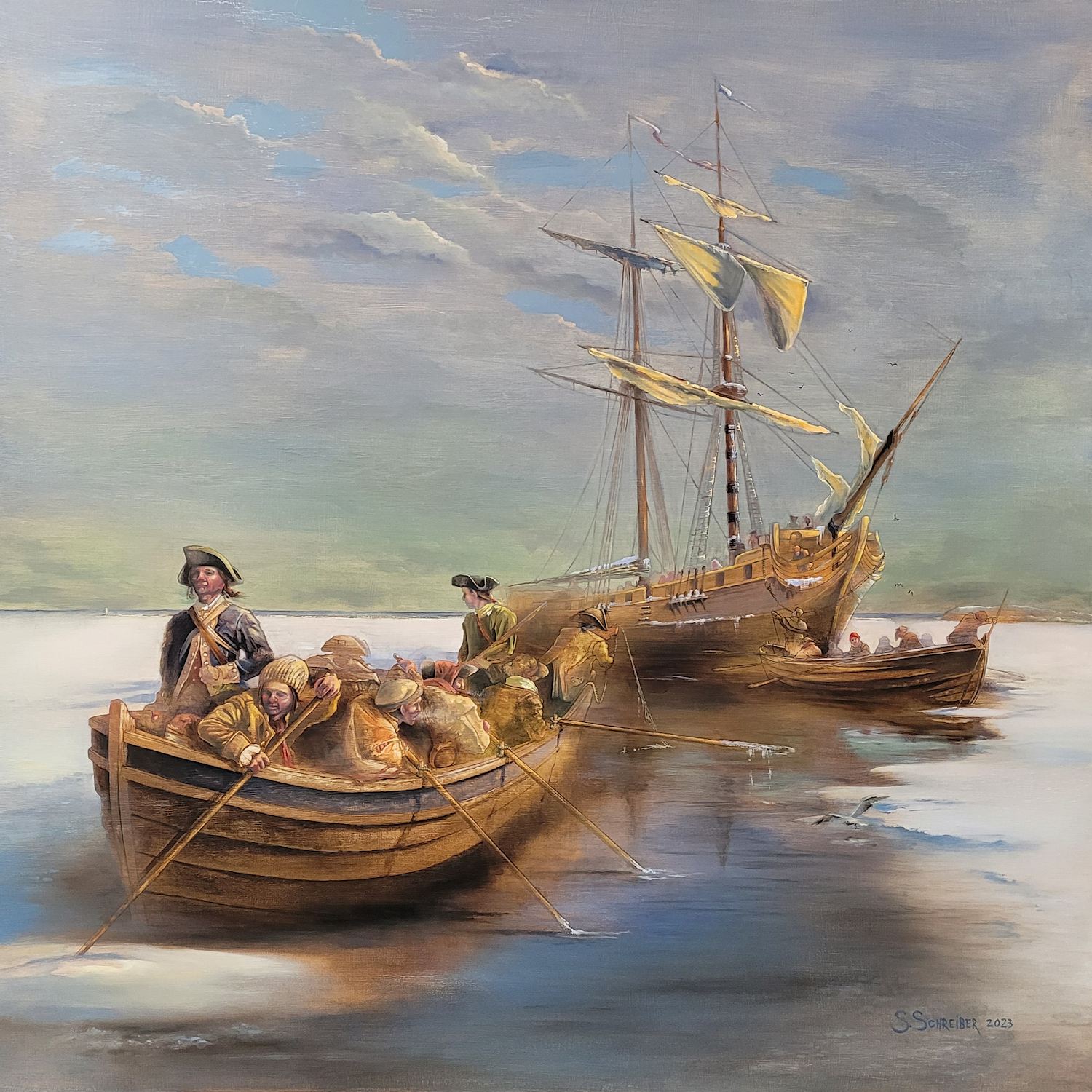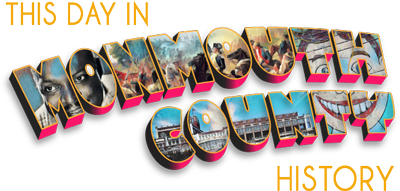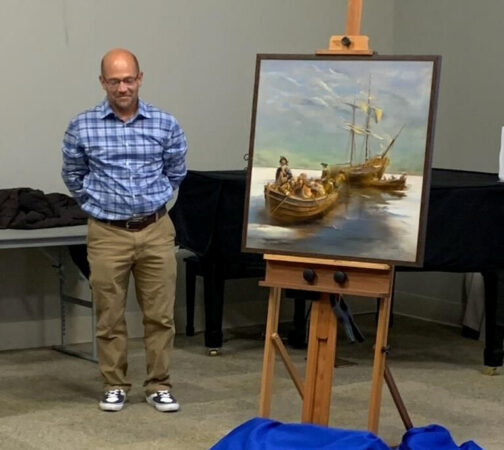The Middletown Militia Secures their Prize, December 30, 1779
©2023 Steve Schreiber. Oil on Hardboard. Commissioned by Monmouth Timeline Inc., donated to Middletown Township Historical Society. Currently on loan and public display at the Middletown Township Public Library, 55 New Monmouth Road, Middletown, N.J.
Artist’s Statement by Steve Schreiber
Reading the story of the Britannia and its capture by the Middletown Militia immediately conjured images in my mind. Being the artist chosen to bring this story to life with an illustration has been an honor.

December 30, 1779, was a bitter cold day all along the coastal Northeast, and Raritan Bay had become an unprotected, windswept plain of ice flows. During this fourth winter of the American War of Independence, in a heavily divided colony on the doorstep of the enemy, a group of local men were faced with a daunting task: to secure this storm-battered brigantine and haul it through frigid conditions to a relatively safe harbor.
I wanted the sky over the Atlantic to feel cold, so I chose subdued gray-blues and greens. The suggestion of filtered sunlight nearing the foreground and the darker skies on the horizon represent the passing nor’easter. The familiar features of the Navesink Highlands, Sandy Hook, and the old lighthouse are all still present, but the map posted with the story by Monmouth Timeline shows some changes. The map, and the painting, show Shrewsbury Inlet, which then connected the ocean with Sandy Hook Bay. The lighthouse, when it was built prior to the Revolutionary War, stood just 500 feet from the tip of Sandy Hook. Today, due to shifting sands, the tip now extends 1.5 miles past the lighthouse.
Portraying the human side of this story, putting myself in the boats and on the bay with these men, was important to me as an artist. I asked myself how it would feel to be involved. These would have been farmers and fishermen, people of varying wealth and standing in their community. I wanted them to appear not only cut from similar cloth but dipped in the same dye bath. Their clothing would have been what they wore daily, some of it threadbare and tattered. The rowboats were probably owned and used by local fishermen on any other day. They would have seen capturing the Britannia, and the profit it might bring, as an opportunity to improve life for themselves and their families. Hard work in freezing temperatures was the means to that end. Taking a turn at rowing would have been a blessing, a way to warm up and keep the blood flowing. The men in the second boat, and on the ship, huddle under their coats and blankets, attempting to stay warm while inactive. The young man standing at the back of the first rowboat keeps an eye on the Hook and New York, both under British control. The militia officer in the foreground plans their long paddle to Cheesequake Creek, where the prize will be guarded, unloaded, and disassembled, awaiting a decision by the Court of Admiralty.
Maybe the viewers of this painting, myself included, are not just spectators. We are part of this event. It is our collective history as residents of Monmouth County, New Jersey, and the United States, whether our family was here at the time of the American Revolution or arrived yesterday. I hope I’ve successfully portrayed a group working together toward a common goal, and that the painting is as inspiring as this story from our local history.
About Steve Schreiber
Steve Schreiber grew up in rural New Jersey, near the town of Farmingdale, in Monmouth County. He attended the Art Institute of Pittsburgh, graduating with an Associate of Applied Science in illustration and design. Work, family, and a wandering spirit brought him to Northeast Ohio. His wide-ranging interests have led him to careers as an illustrator of children’s books, an arborist and tree climber, and a manager of a zipline canopy tour. In 2019 he returned to his passion for painting, saying, “I am excited to pursue a future in fine art. It feels like the right time. If I can express myself creatively, and have a positive influence through my work, I will be very satisfied.”
Schreiber’s work has been included in New Western Talent; a juried show organized by Western Gallery (2020). His painting The Hard Road from Plato’s Cave was selected for the Freefall Studios exhibition Eventually Together (2021) by juror Ron White and was awarded first place. In addition, Schreiber was the first-place winner of the 2022 Toms River Summer Arts Fest. His work is on view at galleries in Ohio and New Jersey. Schreiber lives in Toms River, New Jersey, where he paints and enjoys the outdoors and the area’s rich local history.


Such an amazing painting and artist.